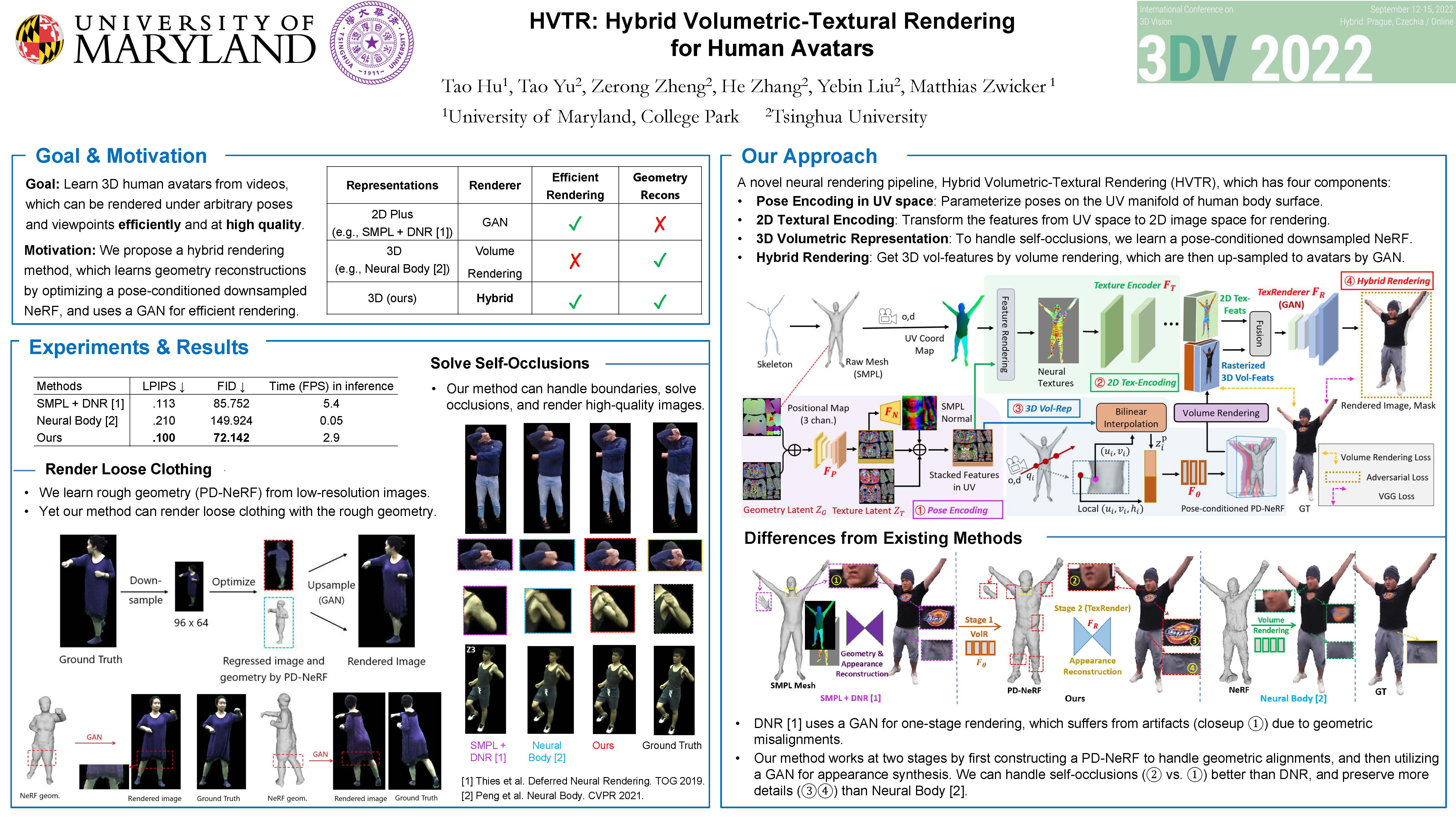Pose Driven Avatars
Render human avatars under different poses and viewpoints.
We propose a novel neural rendering pipeline, Hybrid Volumetric-Textural Rendering (HVTR), which synthesizes virtual human avatars from arbitrary poses efficiently and at high quality. First, we learn to encode articulated human motions on a dense UV manifold of the human body surface. To handle complicated motions (e.g., self-occlusions), we then leverage the encoded information on the UV manifold to construct a 3D volumetric representation based on a dynamic pose-conditioned neural radiance field. While this allows us to represent 3D geometry with changing topology, volumetric rendering is computationally heavy. Hence we employ only a rough volumetric representation using a pose-conditioned downsampled neural radiance field (PD-NeRF), which we can render efficiently at low resolutions. In addition, we learn 2D textural features that are fused with rendered volumetric features in image space. The key advantage of our approach is that we can then convert the fused features into a high-resolution, high-quality avatar by a fast GAN-based textural renderer. We demonstrate that hybrid rendering enables HVTR to handle complicated motions, render high-quality avatars under user-controlled poses/shapes and even loose clothing, and most importantly, be efficient at inference time. Our experimental results also demonstrate the state-of-the-art quantitative results. HVTR is differentiable, and can be trained end-to-end using only 2D images.

HVTR can render human avatars with both pose and shape control from arbitary viewpoints.
Render human avatars under different poses and viewpoints.
Render human avatars under different shape parameters.
@inproceedings{HVTR:3DV2022,
title={HVTR: Hybrid Volumetric-Textural Rendering for Human Avatars},
author={Hu, Tao and Yu, Tao and Zheng, Zerong and Zhang, He and Liu, Yebin and Zwicker, Matthias},
booktitle = {2022 International Conference on 3D Vision (3DV)},
year = {2022}
}